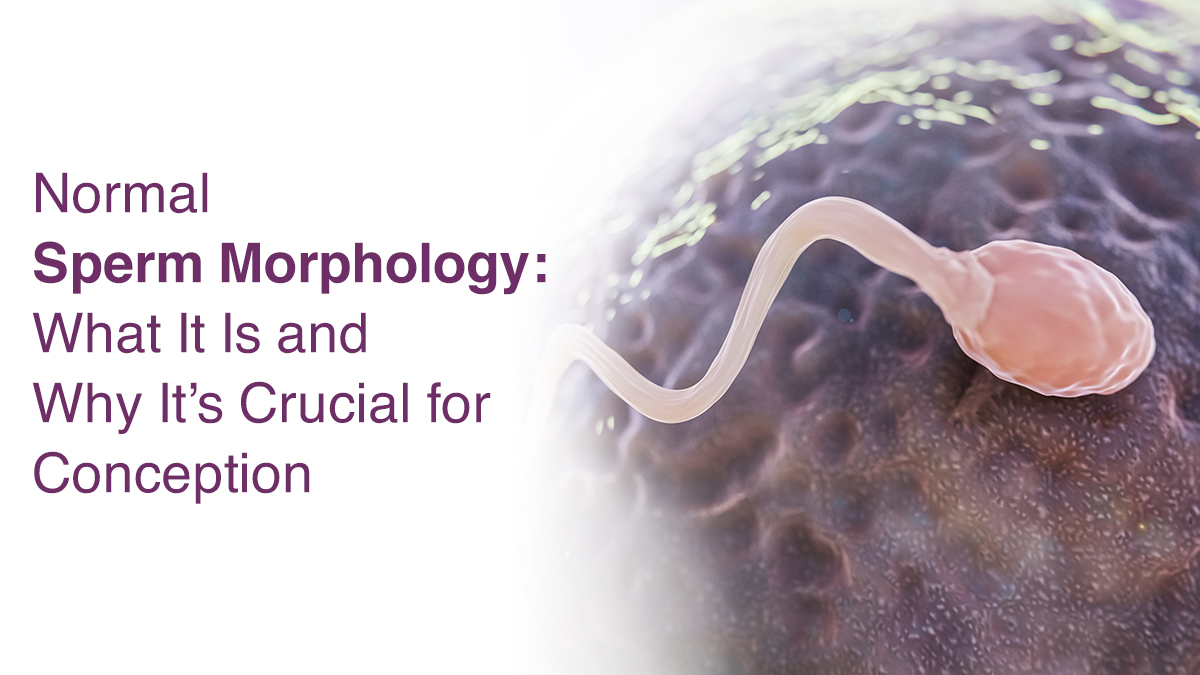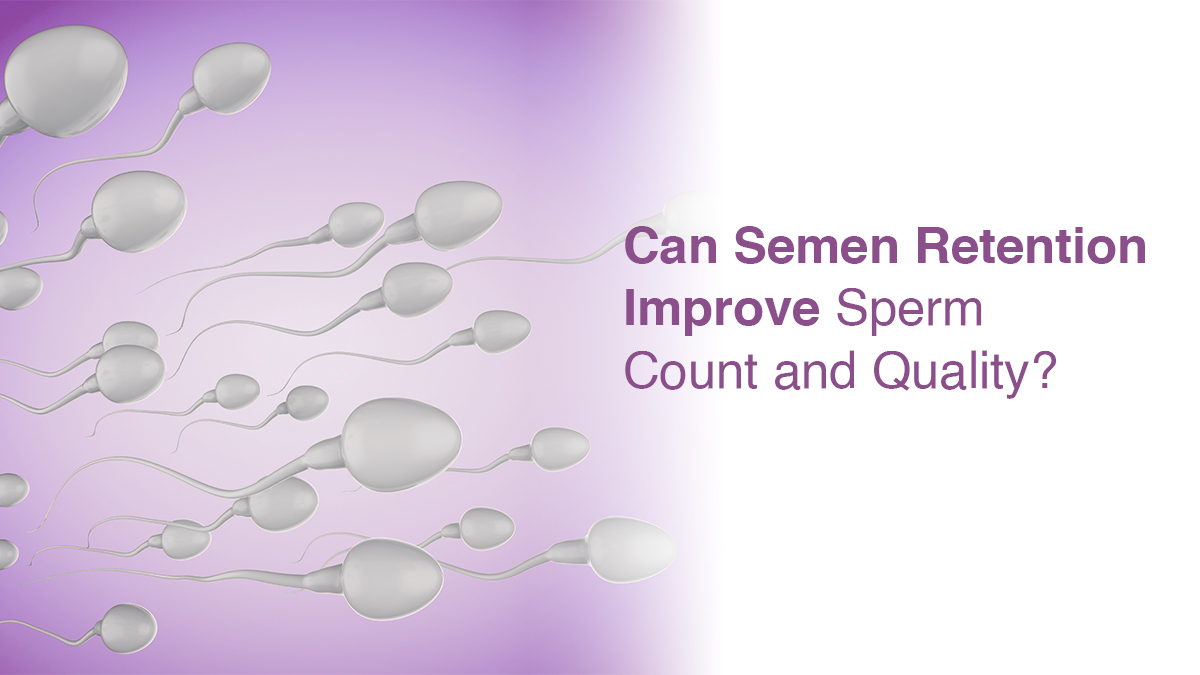
Normal Sperm Morphology: What It Is and Why It’s Crucial for Conception

Fertility is a complex topic impacted by a wide range of variables, including genetics, lifestyle, and environment. Since the quality and functionality of reproductive cells determine the success of conception, both male and female reproductive health are important to couples attempting to conceive. Male fertility is significantly influenced by sperm health, and morphology—the form and structure of sperm cells—is just as significant as sperm count. To comprehend and treat male reproductive problems, understanding abnormal sperm morphology is essential since it can prove to be a hindrance for the sperm to reach and fertilise an egg.
What is Sperm Morphology?
The shape or form of sperm, the male reproductive cell, is referred to as its morphology. Male fertility can be significantly impacted by the morphology of sperm, although it is not the sole contributing factor. It is typical for a certain percentage of ejaculated sperm to constantly have an irregular form; this may not even have an impact on the sperm’s capacity to fertilise eggs. However, some structural issues can make it impossible for sperm to enter an egg.
What Is Considered Normal Sperm Morphology?
Criteria for Normal Morphology:
Sperm with a specific shape and form that increases the chance of successful fertilization. It is said to have normal morphology, an oval head, and a prominent acrosome. The sperm’s long, slender tail that allows for easy movement is characteristic of the sperm. The World Health Organization (WHO) states that at least 4% of sperm must meet these requirements for a sample to be deemed within a healthy range.
Criteria for Abnormal Morphology:
When the sperm shows abnormalities in size or shape, such as a large head or two heads, a bent or coiled tail, or a misshapen head, it is referred to as abnormal sperm morphology. Such abnormalities can affect fertility because they impair the ability of sperm to penetrate and fertilize an egg. Abnormal morphology can be caused by lifestyle choices, inherited factors and exposure to the environment.
Why Is Normal Sperm Morphology Crucial for Conception?
Fertilisation Efficiency
Since appropriately shaped sperm can travel more efficiently and reach the egg, normal sperm morphology is necessary for successful fertilisation. The likelihood of successful fertilisation is increased by sperm’s ability to travel swiftly through the female reproductive canal thanks to their oval-shaped head and long, straight tail. This process can be hampered by abnormal sperm morphology, which lowers the chance of conception.
Genetic Integrity
Normal sperm morphology increases the likelihood that they contain intact genetic material, which is essential for the development of healthy embryos. Unusual sperm may contain broken or damaged DNA, increasing the chance of genetic problems in embryos . Normal morphology, therefore, promotes both fertilisation and the genetic stability necessary for a healthy pregnancy.
Role in Assisted Reproductive Technologies (ART)
Normal sperm morphology is crucial in ART procedures like IVF and ICSI because it increases fertilisation rates and embryo quality. Healthy-shaped sperm in IVF are more likely to spontaneously fertilise the egg. Morphology is important for effective fertility treatments since choosing a well-shaped sperm increases the odds of successful fertilisation and embryo development in ICSI.
Causes of Abnormal Sperm Morphology
Genetic Factors
A higher proportion of deformed sperm can arise from genetic disorders that affect the shape and structure of sperm. Unusual morphology can result from conditions that interfere with normal sperm production, such as Y chromosomal microdeletions and Klinefelter syndrome. Another factor may be a genetic tendency to infertility.
Lifestyle Factors
Sperm morphology is greatly influenced by lifestyle decisions. Aberrant sperm shape can be caused by a number of factors, including smoking, binge drinking, eating poorly, and not exercising. Furthermore, sperm quality may be harmed by exposure to environmental pollutants such as pesticides or heavy metals. Controlling one’s lifestyle can help lower the risks of aberrant morphology.
Diagnosis: How Is Sperm Morphology Evaluated?
Sperm morphology is normally tested using a semen analysis when a sample is inspected under a microscope. Skilled laboratory specialists measure traits like head size, tail shape, and general symmetry to evaluate the structure and form of sperm. The percentage of sperm with normal morphology is then calculated by comparing the results to predetermined standards, such as those published by the World Health Organisation (WHO).
Treatment and Management of Abnormal Sperm Morphology
Lifestyle Modifications
Changing one’s lifestyle is frequently the first step towards improving sperm morphology. Sperm health can be improved by lowering alcohol use, quitting smoking, exercising frequently, and adopting a balanced diet high in antioxidants. The form and quality of sperm may also be enhanced by stress management and avoiding exposure to environmental pollutants.
Medical Treatments
Medical therapies could be suggested in situations where lifestyle modifications alone are not enough. While drugs like clomiphene citrate may increase sperm production, hormonal therapy might help correct abnormalities influencing sperm production.
Assisted Reproductive Technologies (ART)
In extreme situations, morphology-related fertility issues can be resolved by using assisted reproductive technologies (ART), such as intracytoplasmic sperm injection (ICSI), which chooses and injects healthy sperm straight into the egg.
When to Seek Medical Advice?
If a couple has been trying to conceive for more than a year without success, or if the male partner has recognised risk factors, such as abnormal semen analysis findings, after six months, it is advised that they visit the doctor. Seeking advice from an expert can assist in determining the root causes of problems and suggesting suitable solutions.
Conclusion
The key to fertility health is knowing the morphology of sperm. To enable healthy conception, many men are committed to improving sperm morphology with the correct diagnosis and treatment plans. If you wish to avail more details, then visit your nearest Oasis Fertility. For prompt assistance, contact us at 1800-3001-1000 or reach us via our live chat facility.


fill up the form to get a
Free Consultation
Avail 0% interest on EMI
All Procedures | No Upper Limit
Frequently Asked Questions
Can you conceive with 2% sperm morphology?
Is 30% sperm morphology good?
Can I improve sperm morphology?
Does sperm morphology affect babies?
Can vitamins help sperm morphology?
How we reviewed this article:
- Current Version
- January 13, 2025 by Oasis Fertility






